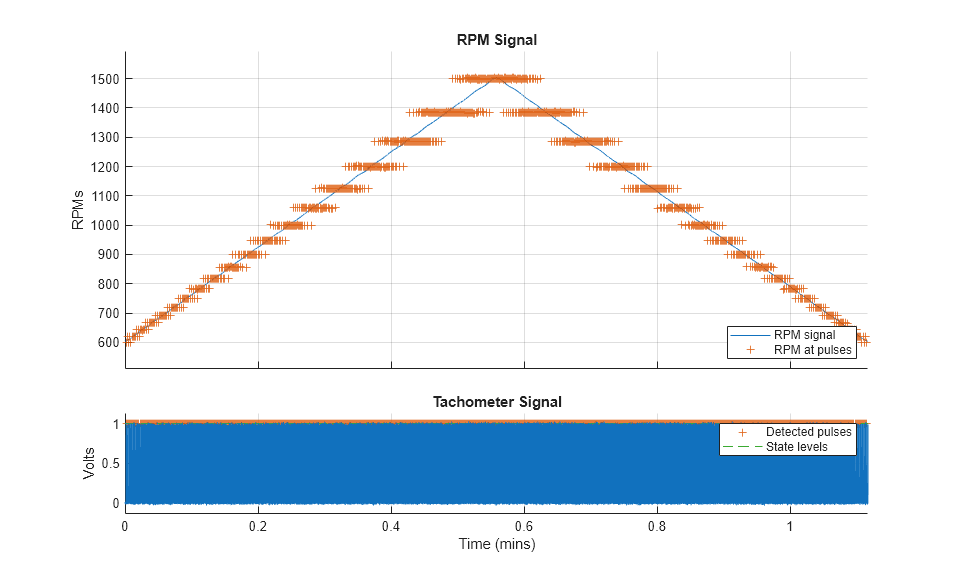tachorpm
Extract RPM signal from tachometer pulses
Description
[___] = tachorpm(
specifies options using x,fs,Name,Value)Name,Value pairs and any of the
previous syntaxes.
tachorpm(___) with no output
arguments plots the generated RPM signal and the tachometer signal
with the detected pulses.
Examples
Input Arguments
Name-Value Arguments
Output Arguments
Algorithms
The tachorpm function performs these steps:
Uses
statelevelsto determine the low and high states of the tachometer signal.Uses
risetimeandfalltimeto find the times at which each pulse starts and ends. It then averages these readings to locate the time of each pulse.Uses
diffto determine the time intervals between pulse centers and computes the RPM values at the interval midpoints using RPM = 60 / Δt.If
'FitType'is specified as'smooth', then the function performs least-squares fitting using splines. If'FitType'is specified as'linear', then the function performs linear interpolation usinginterp1.
References
[1] Brandt, Anders. Noise and Vibration Analysis: Signal Analysis and Experimental Procedures. Chichester, UK: John Wiley & Sons, 2011.
[2] Vold, Håvard, and Jan Leuridan. “High Resolution Order Tracking at Extreme Slew Rates Using Kalman Tracking Filters.” Shock and Vibration. Vol. 2, 1995, pp. 507–515.
Extended Capabilities
Version History
Introduced in R2016b
See Also
orderspectrum | ordertrack | orderwaveform | rpmfreqmap | rpmordermap | rpmtrack | statelevels




